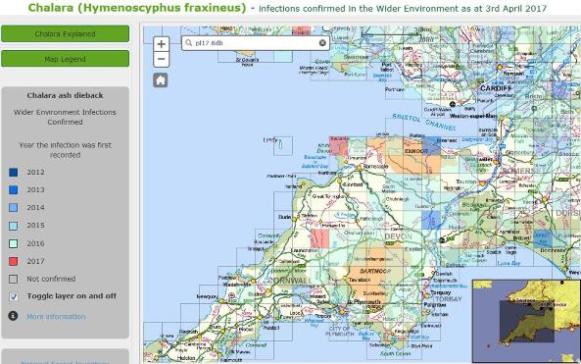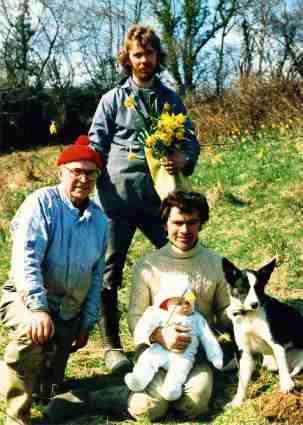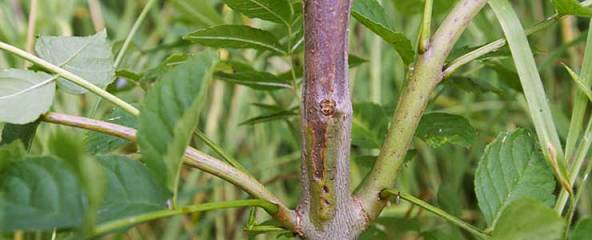The disease is now spreading rapidly in the south west. I recently attended a Royal Forestry Society field meeting in south Devon where Bob Harvey has the disease through several acres of trees planted around seven years ago. Last year twelve trees were affected, the year before only one. Looking at the Forestry Commission’s latest map the infection has also reach our area in south east Cornwall.
A neighbouring tree surgeon thinks it is in some of our hedgerow trees, but a close inspection of Treragin Wood earlier today didn’t find anything conclusive. Young natural regeneration, which often shows the first symptoms of wilting leavings, all seemed fine. But it must only be a matter of time now. The expectation is that as many as 90% of ash trees may succumb to the disease, which will be great for dead wood feeders, but a bit sad after twenty seven years nurturing the trees from planting. The photograph below is of another wood we planted a mile from home, three acres of old market garden being our first foray into woodland ownership. The baby in my lap is now well past his 30th birthday!
There are no easy solutions to the spread of diseases, a mix of more international trade (Dutch Elm disease was imported from Canada via Bristol docks in the late 1960s) and climate change. The advice for ash is mainly to let nature take its course, but future resilience of woods can be improved by using a wider range of species, to help spread the risk. At Treragin we also have southern beech, wild cherry and oak. I’d love to try some elm again, but for the moment that still seems too risky. There is one quite large specimen in the hedge which I am watching closely, perhaps that one will escape and “get away”?
Nature has a wonderful way of eventually recovering, but as I head towards my sixtieth birthday, I would prefer not to have to have to start Treragin all over again! Ah well, I consoled myself with a check up on how the Broad-leaved helleborines and slow-worms are doing this year; and here they are in the photos below.
Stephen







